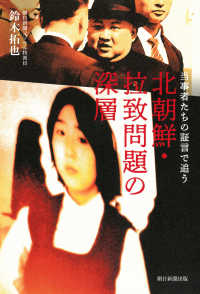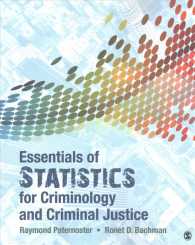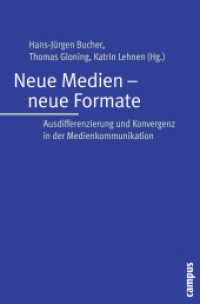- ホーム
- > 洋書
- > 英文書
- > Cinema / Film
Full Description
This monograph offers a critical study of Nahid Persson Sarvestani's documentary practice across three decades. Highlighting the filmmaker's at times limited opportunities to record visible evidence in situ, the book frames her involvement with new documentary film technology and its influence on her practice. From a discursive point of view, Boel Ulfsdotter introduces the concept liquid authorship to position Persson Sarvestani's work by sparring the films' production history against different iterations of post-millennium documentary theory. In a bid to move the boundaries of traditional documentary forward, the author also studies how Persson Sarvestani applies first-person filmmaking in relation to the subject of documentary, including the relationship between director and enunciator.
The filmmaker's documentary output is reflected against the tenets of feminist theory. To establish their discursive urgency, Boel Ulfsdotter unpicks the films' fabric to comment on their aesthetic merits, narrative composition, including the impact of voice-over, vis-a-vis contemporary documentary practice.
Contents
List of figures
Acknowledgements
Introduction
Part I. Prostitution and Polygamy: Two close-ups of patriarchy
1. Not Accented Cinema: Prostitution Behind the Veil (2004)
2. Hegemonic Patriarchy and polygamy: Four Wives, One Man (2007)
Conclusion Part I
Part II. New narrative and formal interventions
3. Auteurism in Accented Cinema mode: The Queen and I (2008)
4. First signs of collective authorship: My Stolen Revolution (2013)
Conclusion Part Two
Part III. Authorial divestiture in the 21st century
5. Expanding her documentary apparatus: Be My Voice (2021)
6. Polyvocal political activism as matrix for the liquid documentary: Son of a Mullah (2023)
Conclusion Part Three
Summing Up
References
Filmographies
Index








